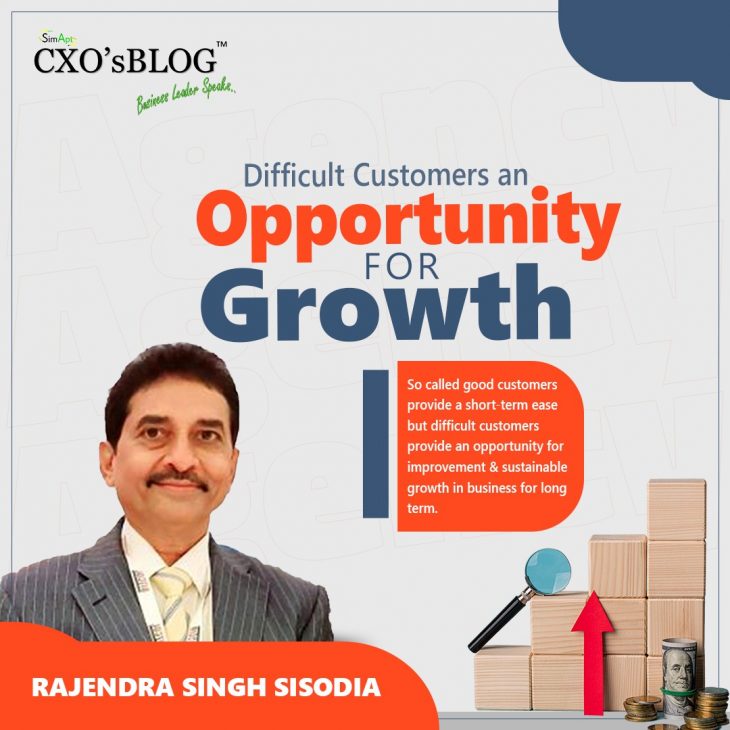Author: Rajendra Singh Sisodia
So called good customers provide a short-term ease but difficult customers provide an opportunity for improvement & sustainable growth in business for long term.
In a sales review meeting with the team, the new CEO finds that there is a huge drop in market share in one of the products. He asked the product head to discuss the recovery plan. In a typical way, the reasons for loss were explained & a big list of customers with small volumes was shared as the recovery plan.
However, the CEO wanted to discuss the status of business of 20% customers who give 80% of the business volume. Initially there was resistance but finally it was presented. What came out was surprising that one big customer with volume equivalent to 20% market share was lost to competitors 6 months back. Instead of regaining this customer, a big plan to get this volume from 35 small volume customers was shown.
On further enquiries it came out that big customer was not included in plan because this was a very difficult & demanding customer. Product head also forewarned CEO that procurement manager was very rude & doesn’t behave properly, to justify his stand that business of this customer should not be solicited. However, the CEO did not get convinced and advised that this business should be tried.
Not seeing much enthusiasm in his sales team, the CEO sought the appointment to meet the customer. After rigorous follow up he got the appointment & went to meet the customer along with product head next day at 10 am. However, the customer did not come to meet and asked them to wait. They waited for the whole day. In between the product head was reminding CEO that what he said about the customer was correct. But CEO kept his cool & patience. Finally, the customer came at 5.30 pm. But CEO thanked him and appreciated the customer that he might have been too busy. When customer asked CEO the purpose of visit, CEO said that he had recently joined and came all the way to pay a courtesy visit. Customer thanked him for this. However, CEO took this opportunity to invite him for dinner. After initial resistance the customer agreed to join for dinner. CEO ensured that the dinner was hosted in the best hotel. Customer enjoyed the dinner & thanked CEO for this hospitality. In the process the CEO also developed a personal equation with the customer.
Further meetings were very cordial & always ended with dinner or lunch of both the teams. The difficult customer was now becoming easier……………………………………………………………………………….
After few months, the negotiations were held with all suppliers for annual contact. Unlike earlier times, this time the customer treated CEO & his team with full respect. During negotiations, CEO led the discussions to highlight the superiority of their product in performance with matching commercials of existing supplier. After detailed deliberations, the customer was convinced and the annual supply contract was awarded. Finally, CEO hosted a dinner for customer & his team to celebrate this occasion in the best venue. This was indeed appreciated by the customer and paved the way for renewal of annual supply contracts year after year.
This narration drives home following focal points in handling such difficult cases,
# Stick to fundamentals (20%, 80%)
# Win the person not business/contract
# Bring informal feel in business dealings
# Know & present value of your proposition to customer
# Highlight USP as value addition to beat competition
